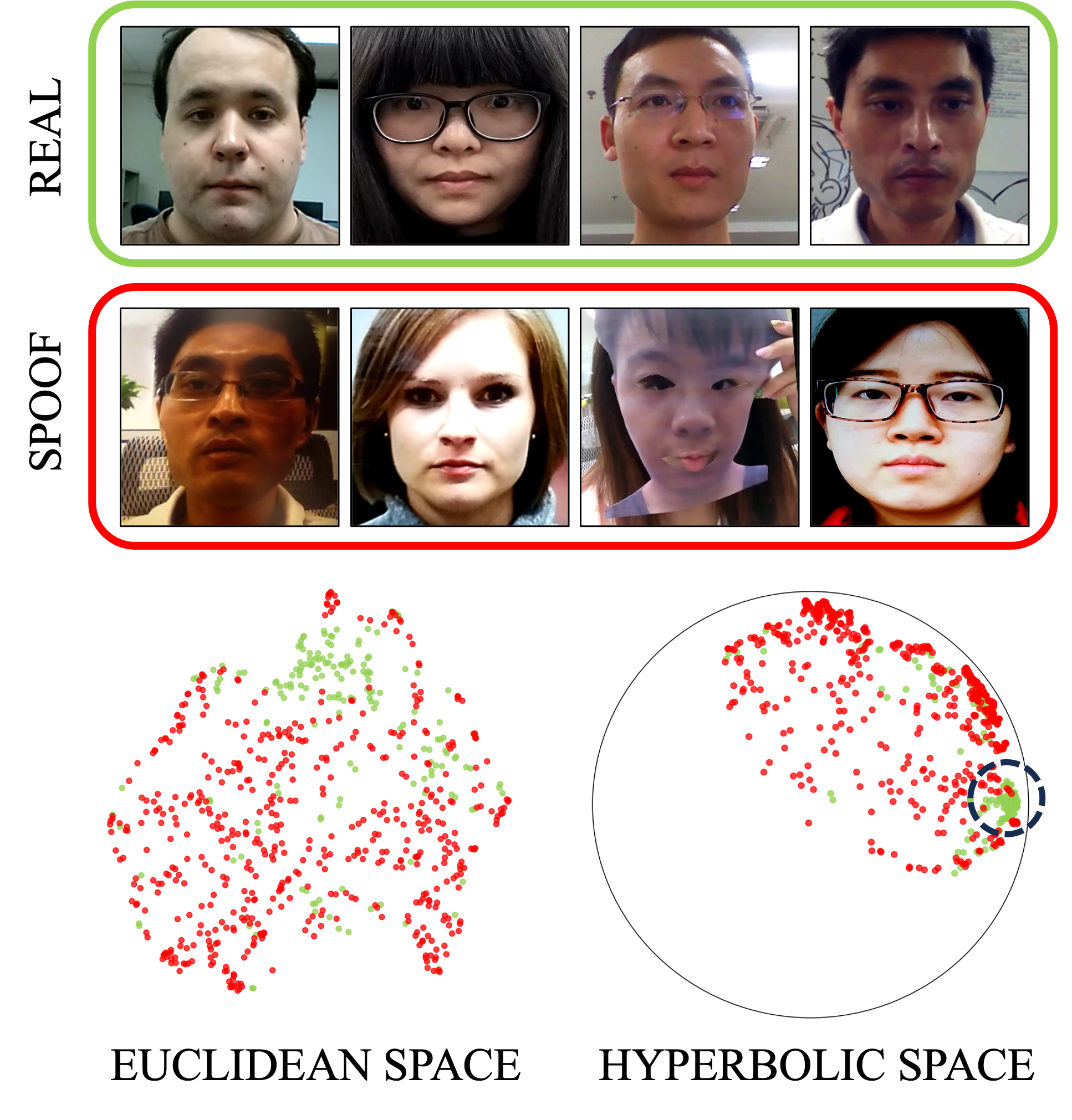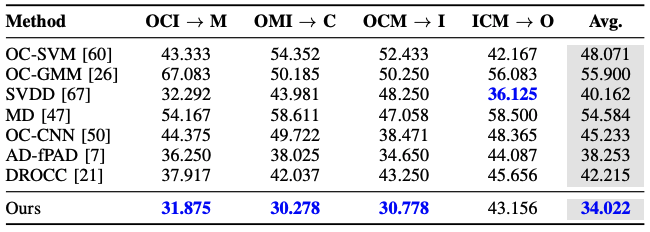Motivation & Contribution

Face recognition technology has become an integral part of modern security systems and user authentication processes. However, these systems are vulnerable to spoofing attacks and can easily be circumvented. Most prior research in face anti-spoofing (FAS) approaches it as a two-class classification task where models are trained on real samples and known spoof attacks and tested for detection performance on unknown spoof attacks. However, in practice, FAS should be treated as a one-class classification task where, while training, one cannot assume any knowledge regarding the spoof samples a priori. Hyp-OC, is the first work exploring hyperbolic embeddings for one-class face anti-spoofing (OC-FAS).
- We show that using hyperbolic space helps learn a better decision boundary than the Euclidean counterpart, boosting one-class face anti-spoofing performance.
- We propose Hyperbolic Pairwise Confusion Loss (Hyp-PC), that operates on the hyperbolic space inducing confusion within the hyperbolic feature space, effectively stripping away identity information. Such disruption of features helps to learn better feature representations for the face anti-spoofing task.
- We provide a hyperbolic formation of cross-entropy loss (Hyp-CE), that uses hyperbolic softmax logits and penalizes the network for every misclassification.
Hyp-OC Framework
 Overview of the proposed pipeline: Hyp-OC. The encoder extracts facial features which
are used to estimate the mean of
Gaussian distribution utilized to sample pseudo-negative points. The real features and
pseudo-negative features are then
concatenated and passed to FCNN for dimensionality reduction. The low-dimension features
are mapped to Poincaré Ball
using exponential map. The training objective is to minimize the summation of the
proposed loss functions Hyp-PC and
Hyp-CE. The result is a separating gyroplane beneficial for one-class face
anti-spoofing.
Overview of the proposed pipeline: Hyp-OC. The encoder extracts facial features which
are used to estimate the mean of
Gaussian distribution utilized to sample pseudo-negative points. The real features and
pseudo-negative features are then
concatenated and passed to FCNN for dimensionality reduction. The low-dimension features
are mapped to Poincaré Ball
using exponential map. The training objective is to minimize the summation of the
proposed loss functions Hyp-PC and
Hyp-CE. The result is a separating gyroplane beneficial for one-class face
anti-spoofing.
Results

Results of intra-domain performance.
 Results of inter-domain performance (single-source-single-target-setting).
Results of inter-domain performance (single-source-single-target-setting).
 Results of inter-domain performance (leave-one-out-setting).
Results of inter-domain performance (leave-one-out-setting).
BibTeX
@article{narayan2024hyp,
title={Hyp-OC: Hyperbolic One Class Classification for Face Anti-Spoofing},
author={Narayan, Kartik and Patel, Vishal M},
journal={arXiv preprint arXiv:2404.14406},
year={2024}
}